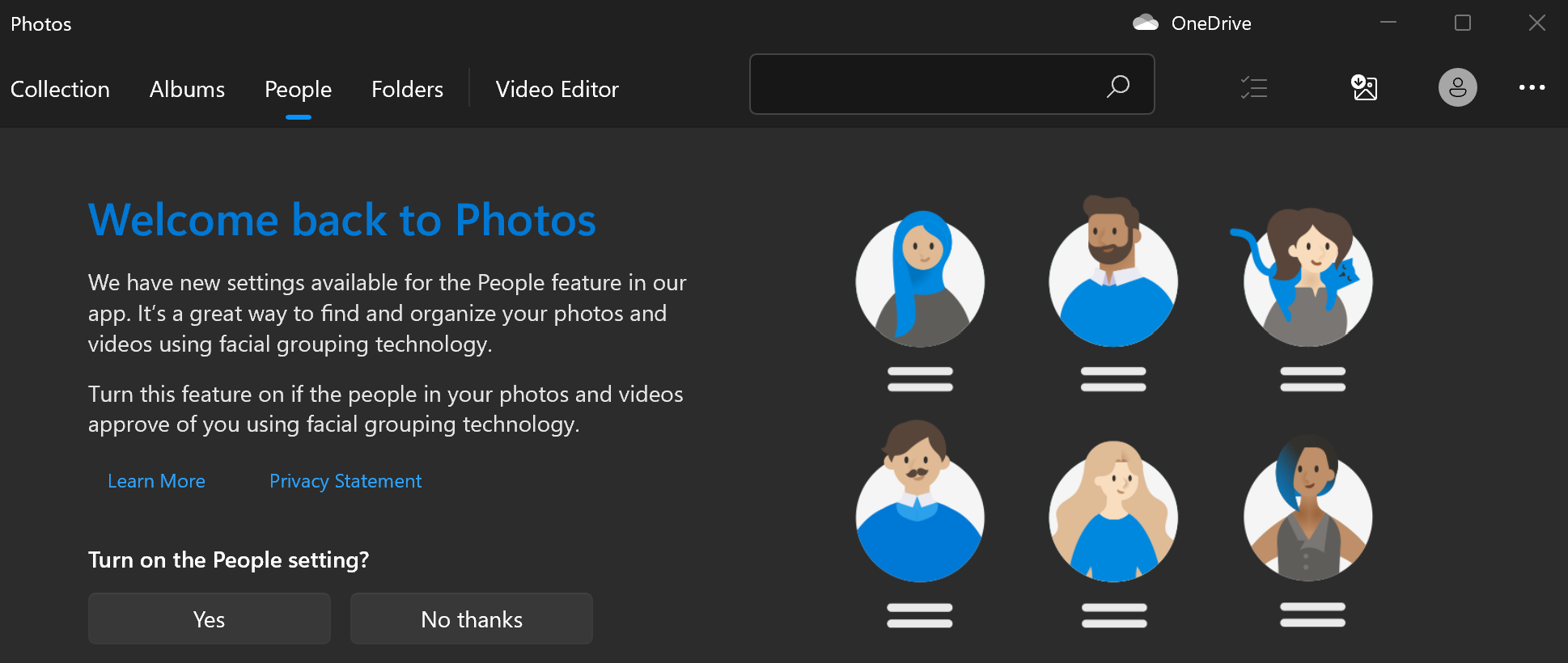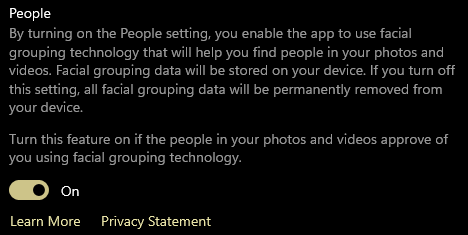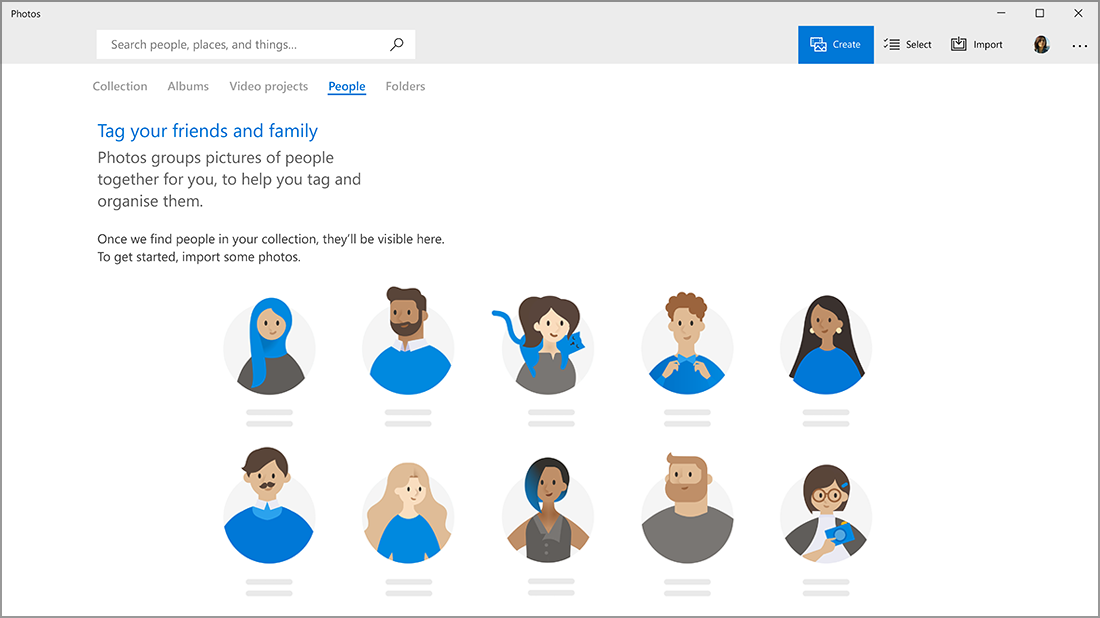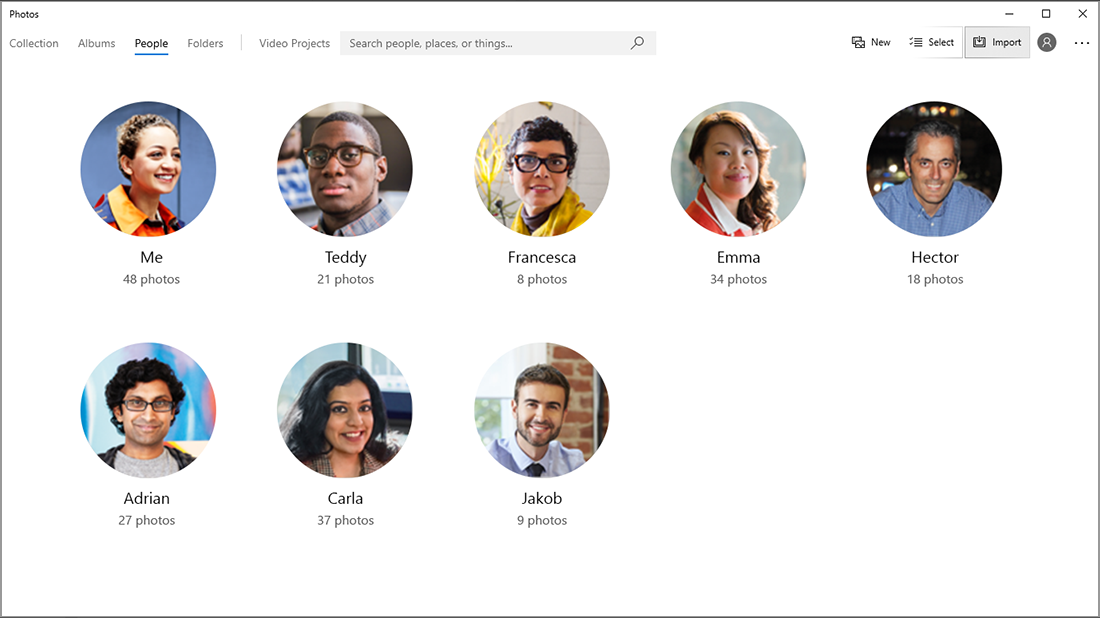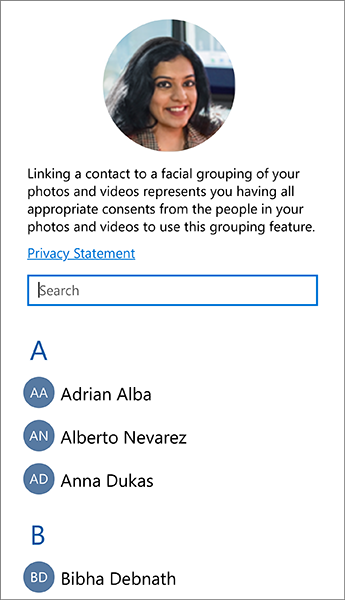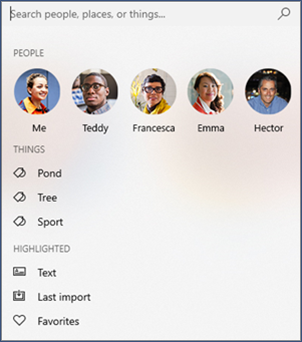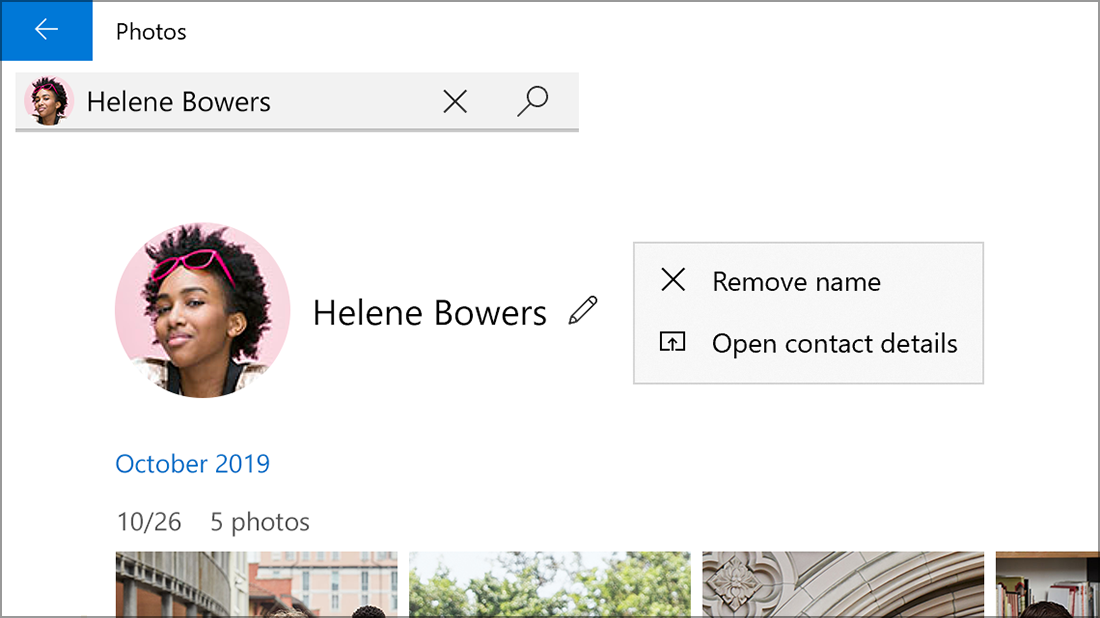Group photos by faces
Applies To
Microsoft released a new version of the Photos app for Windows 11 in October 2022. This article relates to the previous legacy version of the Photos app on Windows 10 and some versions Windows 11, detailing the group photos by faces feature. The People tab and the ability to group photos and videos by similar faces (when turned on by you) is not available in the new Photos app.
To find out which version of the Photos app you are running:
-
In the search box on the taskbar, type photos and then select the Photos app from the results.
-
Select Settings , and under the About section, select About Photos.
-
Photos: says Updated in the About section of Settings. You are running the new version of the Photos app. This version includes features like iCloud integration in left hand navigation bar.
-
Photos legacy: does not say Updated in the About section of Settings. You are running the previous, or legacy version of the Photos app. The legacy version includes features like Video Editor, People tab, and Albums. Learn more about Photos legacy.
If your PC is running the new version of Photos and you'd like to revert to the Photos legacy version, open the Photos app, select Settings, and under the About section select Get Photos Legacy.
When turned on by you, previous versions of the Photos app use facial grouping technologies to help you quickly and easily organize photos and videos of friends and family. Facial grouping distinguishes faces from other objects in an image and groups similar faces across multiple photos or videos based on information that you provide to the app about people in your collection.
For more information about the data that is collected and stored when you use the previous legacy versions of the Photos app, see "Photos legacy" in the "Photos" section in the Privacy Statement.
Manage the People feature
When you start the previous version of the Photos app, you may see a welcome screen that asks if you want to use the facial grouping feature in the People tab. You can choose whether you want the facial grouping feature turned on or off using that welcome screen. You can also use the Photos Legacy app settings to turn it on or off at any time.
When you start the Photos app you may be asked if you want to use the facial grouping feature.
Notes: Facial grouping is available on the following:
-
Windows 10 (2019.19061.17310.0, the July 2019 Photos app version, or later).
-
Windows 11 (some versions of Windows 11 if you are running the Photos Legacy app).
-
In the search box on the taskbar, type photos and then select the Photos app from the results.
-
Select the People tab.
-
If you see a welcome screen asking for your permission to turn on the People setting in the Photos app, do one of the following:
-
Select Yes to leave the People setting turned on and preserve previously determined facial groupings.
-
Select No thanks to delete any previously determined facial groupings. When asked whether you’re sure you want to turn off this setting, select Yes.
-
Any time you want to turn facial grouping on or off, you can use Settings.
Turn on the facial grouping feature
-
In the search box on the taskbar, type photos and then select the Photos app from the results.
-
Select the People tab.
-
In the upper-right corner of the Photos app, select See more > Settings .
-
Under the Viewing and editing section, toggle the People setting from Off to On.
Turn off facial grouping
Turning off the People setting removes any existing facial grouping data generated by the facial grouping process. No photos or videos will be removed from your device if this setting is changed.
-
In the search box on the taskbar, type photos and then select the Photos app from the results.
-
Select the People tab.
-
In the upper-right corner of the Photos app, select See more > Settings .
-
Under the Viewing and editing section, toggle the People setting to Off and then confirm that you want to turn off the setting by selecting Accept.
Note: If you decide to turn on this setting again later, your collection will be scanned again, and facial grouping data will be regenerated.
Use facial grouping
When you turn on the facial grouping setting, the People tab populates with facial groupings. As your photos and videos are being added to the Photos collection, your People tab might look something like this:
As more photos and videos are added, facial groupings will begin to appear on the People tab.
The groupings can be linked with contacts from the People app in Windows.
-
Select Start tagging if you see it. If you don't see it, your photos have probably already been grouped and tagged, and you can skip this step.
-
Select Add name under a grouping and select a contact. If no contact exists for that person yet, you can always add one.
After you’ve linked your contacts, you can easily find your friends and family by using the search box based on the names, contact information, or other tags you’ve chosen for those groupings.
-
Select the facial group you want to unlink. A page will open showing the contact's profile picture and photos of the contact.
-
Select the pencil icon next to a contact's name, then select Remove name to unlink the contact from the facial grouping.
Note: You can select Open contact details to see the contact record from the People app in Windows.

